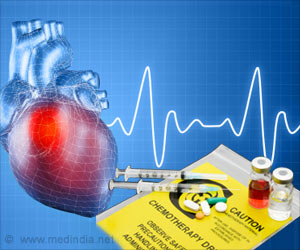Scientists have identified possible treatment breakthrough for the rare disease arrhythmogenic right ventricular cardiomyopathy.

‘Arrhythmogenic cardiomyopathy affects between 0.02% and 0.1% of the general population, and is therefore classified as a rare disease. ’





Arrhythmogenic cardiomyopathy can cause sudden cardiac death, especially in young men. Less severely affected men and women with this disease gradually develop heart failure, explained study coordinators Dr Enrique Lara Pezzi, a group leader at the CNIC, and Dr Pablo García-Pavía, director of the Familial Cardiomyopathy Unit in the Cardiology Service at Puerta de Hierro University Hospital, Majadahonda (Madrid). Arrhythmogenic cardiomyopathy affects an estimated 0.02% to 0.1% of the population, and is therefore classed as a rare disease. ARVC5 is the most aggressive subtype and is caused by a mutation in the TMEM43 gene. The first ARVC5 patients were identified in the island of Newfoundland, Canada, but the disease has since been detected in other regions around the world, including Spain.
The Spanish scientists said that during the early 'hidden' phase of the disease, patients generally show no symptoms, despite already being at risk of arrhythmias and sudden death. Although at early stages the disease predominantly affects the right ventricle, as fibrosis expands it can also impair left ventricular function, and patients develop symptoms and manifestations of heart failure that can require heart transplant.
"Nevertheless, the mechanisms underlying this disease are unknown, and there is currently no cure," said Dr Lara Pezzi. Current treatments are therefore palliative, and the main emphasis is on the prevention of sudden cardiac death by fitting an implantable cardioverter defibrillator (ICD), with subsequent management of heart failure, and possibly heart transplant.
In a clear example of translational research, the groups led by Dr Lara Pezzi and Dr García-Pavía joined forces to find new treatments for this devastating disease that could be used in newly diagnosed patients at Puerta de Hierro hospital. Summarizing the challenge faced by the research team, Dr García-Pavía commented, "We were confronted by a disease about which very little was known and that causes the very early death of several people from the same family."
Advertisement
The research team tested several possible therapeutic approaches in the mouse model. While treatments directly targeting fibrosis were ineffective, positive results were obtained with two strategies for inhibiting GSK3?, one based on pharmacological inhibition and the other on overexpression of the calcineurin subunit CnAβ1. As Dr Lara Pezzi explained, "both approaches reduced the rate of cardiac cell death, improved cardiac contraction, and prolonged survival." Nevertheless, the scientists warn that, although the transgenic mouse model mimics human ARVC5, it does not reproduce all disease characteristics. For example, male and female mice are equally affected, whereas the human disease is much more aggressive in men than in women.
Advertisement
Source-Eurekalert









